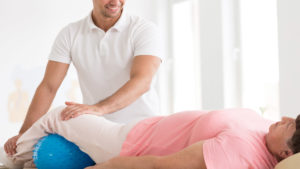
Does Insurance Cover Massage Therapy?
Massage therapy can be costly, but your insurance company may help to cover the costs. Additionally, you may be able to use FSA or HSA to cover the cost of medical-massage.
Therapeutic massage is a holistic approach to alleviating hip pain, knee pain, and ankle/foot pain through manual manipulation of soft tissues and muscles. It is based on the principle that targeted massage techniques can improve blood circulation, reduce muscle tension, and promote relaxation, ultimately leading to pain relief and improved mobility in the affected areas.
Massage can help reduce swelling, improve blood flow, and alleviate discomfort, making it beneficial for both acute and chronic foot and ankle conditions.
In all cases, a qualified massage therapist will tailor the treatment to the individual’s specific needs and medical history. Therapeutic massage is generally considered a complementary therapy and should be used in conjunction with other medical treatments like physiotherapy and rehabilitation exercises as recommended by a healthcare professional.
Regular sessions can provide ongoing pain management and improve overall quality of life for individuals experiencing hip, knee, or ankle/foot pain.
Schedule a session with an experienced massage therapist to unlock a rejuvenated, pain-free version of yourself. Your path to a healthier, more comfortable life begins with the choice to invest in your overall well-being.



Consider seeing a massage therapist for lower body pain if you are affected by any of the following circumstances:
Chronic Pain: If you are experiencing persistent lower body pain that lasts for more than a few days or is recurring, it may be beneficial to consult a massage therapist. Chronic pain can be caused by muscle tension, overuse, or underlying musculoskeletal issues, and massage therapy can help manage and alleviate it.
Muscle Tension and Tightness: If you have noticeable muscle tension, tightness, or knots in your lower body muscles, a massage therapist can use techniques like deep tissue massage, myofascial release, or trigger point therapy to release muscle tension and improve flexibility.
Limited Range of Motion: If you have difficulty moving your lower body joints due to stiffness or limited range of motion, massage therapy can be used to increase joint flexibility and mobility. This is especially relevant for conditions like osteoarthritis or after injuries.
Post-Injury or Surgery Recovery: After sustaining a lower body injury or undergoing surgery, massage therapy can aid in the recovery process. It can help reduce swelling, improve circulation, and alleviate pain, facilitating a faster and more effective recovery.
Sports or Physical Activity-Related Pain: Athletes or individuals who engage in physical activities may experience lower body pain due to muscle strains, sprains, or overuse. Massage therapy can be part of a comprehensive rehabilitation plan to speed up recovery and prevent future injuries.
Stress-Related Pain: Sometimes lower body pain can be exacerbated or even caused by stress and tension. Massage therapy can promote relaxation, reduce stress, and relieve associated muscle tension, leading to pain relief.
Chronic Conditions: If you have chronic conditions such as fibromyalgia or myofascial pain syndrome that cause lower body pain, massage therapy may be recommended as part of a pain management strategy.
Precautionary and Preventative Care: Regular massage therapy sessions can also serve as a preventative measure to maintain overall lower body health. By addressing minor issues before they become major problems, you can prevent the development of more severe pain or injuries.
It’s important to note that while massage therapy can be beneficial for lower body pain, it should be used in conjunction with advice and treatment from a healthcare professional, such as a physician or physical therapist. Before seeking massage therapy, consult with a healthcare provider to ensure that it is a safe and appropriate option for your specific condition. Additionally, choose a qualified and licensed massage therapist who has experience in dealing with lower body pain and related conditions.

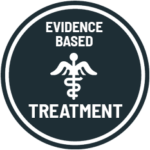













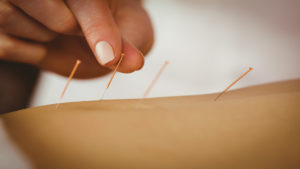
Addressing Hip Pain:
Therapeutic massage for hip pain focuses on addressing issues such as muscle imbalances, tightness, and inflammation around the hip joint. Techniques may include deep tissue massage, myofascial release, and trigger point therapy to release tension in hip muscles. Our licensed massage therapists work on the hip flexors, gluteal muscles, and surrounding connective tissues to improve flexibility and reduce pain. Regular sessions can enhance hip joint mobility and alleviate discomfort associated with conditions like hip osteoarthritis or muscle strains.
Addressing Knee Pain:
A medical massage for knee pain aims to relieve discomfort caused by conditions like knee osteoarthritis, ligament injuries, or patellar tracking issues. At Portland Wellness Care, our massage therapists use gentle kneading, friction, and stretching techniques to improve circulation and flexibility around the knee joint. Targeted work on the quadriceps, hamstrings, and calf muscles helps balance muscle tension and support knee stability. Massage therapy can reduce inflammation and promote the healing process, contributing to pain reduction and enhanced knee function.
Addressing Ankle/Foot Pain:
We are able to target ankle and foot pain by addressing common issues like plantar fasciitis, Achilles tendonitis, or ankle sprains through massage therapy. Techniques may include effleurage, deep tissue massage, and myofascial release to release tension in the calf muscles, plantar fascia, and Achilles tendon. Stretching and range-of-motion exercises may be incorporated to improve ankle and foot flexibility.
Embrace the relief, serenity, and revitalization that await you through the transformative benefits of massage therapy. Initiate your journey by scheduling a session with a proficient massage therapist dedicated to your overall wellness at Portland Wellness Care!
Massage therapy can be helpful for various types of hip, leg and foot pain, especially when the pain is related to muscle tension, tightness, or musculoskeletal issues. Here are some common types of lower body pain that massage therapy can assist with:
Visit our licensed massage therapist at Portland Wellness Care today! Our top-notch massages are designed to effectively address lower body pain, targeting areas from the hip to the knees and down to the foot. Don't hesitate, schedule your appointment now!
Any Questions? We’re here to help
Portland Wellness Care
4160 NE Sandy Blvd Suite 1100. Portland, OR 97212
Call Us: (971) 379-2455
Fax Us: (503) 477-9958
E-Mail Us: contact@portlandwellnesscare.com
Open Hours

Dr. Chase G. Waters

Dr. Scott A. Cathcart

Devin Babat

Massage therapy can be costly, but your insurance company may help to cover the costs. Additionally, you may be able to use FSA or HSA to cover the cost of medical-massage.
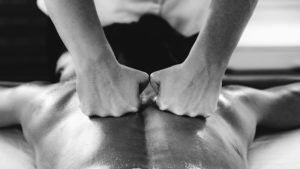
Massage offers improved connections between your mind and body through relaxation and reduced tension. With several types of massage available, you can find the right option to remove pain and stress.
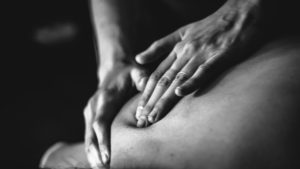
The thought of massage therapy may be all you need to set an appointment, but wait until you learn the benefits of massage therapy.

Portland Wellness Care